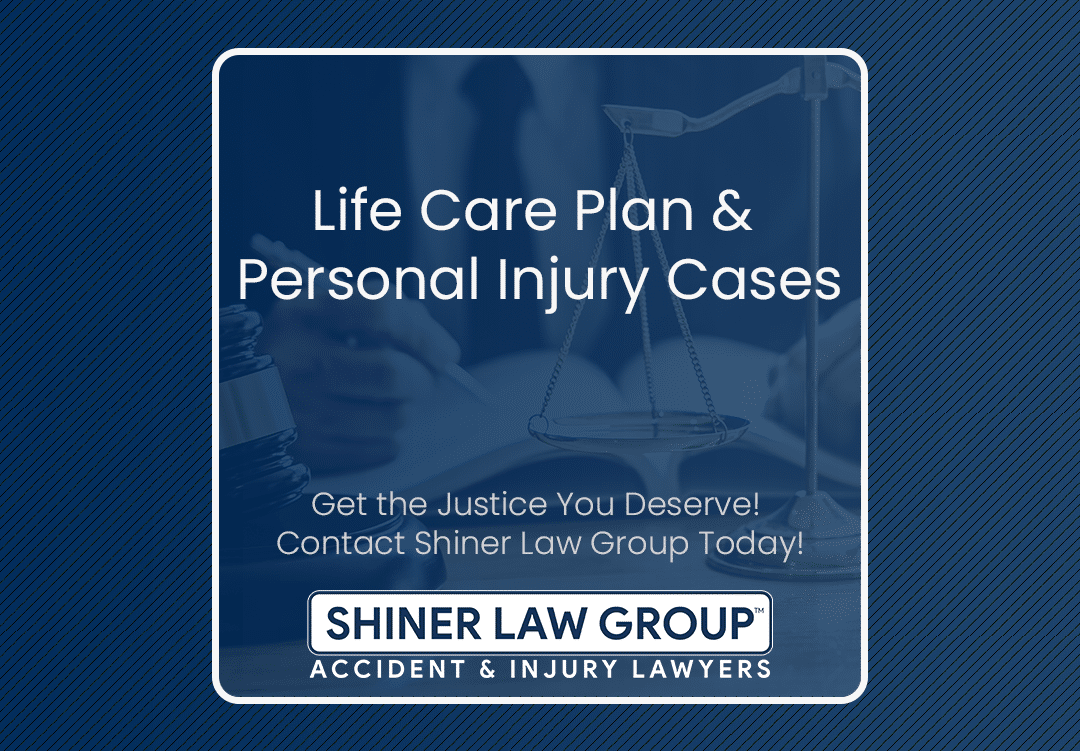How a Life Care Plan Can Assist Someone with a Catastrophic Injury Win Their Personal Injury Case
Injuries can have life-changing impacts, often leading individuals and their loved ones to deal with significant medical, financial, and emotional hurdles. In injury lawsuits, demonstrating the severity of these consequences and how they affect the person’s life in the long run is crucial for securing fair compensation. The Life Care Plan emerges as a tool in this endeavor. This detailed piece delves into the role of Life Care Plans in injury lawsuits, explaining their purpose, coverage areas, and customization based on injury types. It also discusses incorporating economic damages and how potential advancements in medical care could influence these plans.
What is a Life Care Plan?
A Life Care Plan is a thorough document that outlines the future needs of an individual who has experienced a severe injury or is managing a long-term illness. These plans are carefully created by healthcare experts in life care planning, such as doctors, rehabilitation professionals, and life care planners. The main goal of a Life Care Plan is to ensure that the injured person receives care and assistance to maintain a quality of life. This document plays a role in injury cases and can significantly impact the potential settlement or decision made by an insurance company.
Life Care Plan Utilization in Personal Injury Cases
In personal injury cases, demonstrating the full extent of the injury and its long-term impact on the plaintiff’s life is crucial for securing fair compensation. A Life Care Plan plays an essential role in this process by providing:
- Detailed Documentation: A Life Care Plan offers a comprehensive and detailed account of the injured party’s medical condition, treatments received, and the future medical care needed. This includes:
- Current medical status and prognosis.
- Detailed lists of all necessary future medical treatments, therapies, medications, and supportive care.
- Projections of the costs associated with these future needs.
- Quantification of Long-term Needs: The plan quantifies long-term needs, including medical care, rehabilitation, assistive devices, home modifications, and personal care. This thorough documentation helps establish the total economic impact of the injury over the individual’s lifetime.
- Evidence for Non-economic Damages: Beyond economic damages, the Life Care Plan provides a basis for assessing non-economic damages such as pain and suffering, loss of enjoyment of life, and emotional distress. By detailing the long-term impact of the injury on the individual’s daily life, the plan supports claims for non-economic compensation.
- Expert Testimony: The professionals who develop the Life Care Plan often serve as expert witnesses in court, explaining the methodology and rationale behind the projections. Their testimony can be pivotal in helping the jury understand the full scope of the plaintiff’s needs and the justification for the claimed damages.
Increasing Potential Settlement or Verdict
A well-prepared Life Care Plan can significantly enhance the potential settlement or verdict in a personal injury case by providing compelling evidence that:
- Substantiates Financial Claims: Insurance carriers and juries are more likely to accept financial claims thoroughly documented and supported by expert analysis. A Life Care Plan breaks down the costs of future medical care into detailed, specific components, making it clear that the requested compensation is reasonable and necessary.
- Demonstrates Future Impact: By projecting the lifelong impact of the injury, the Life Care Plan illustrates the long-term financial burden on the injured party. This comprehensive view helps secure compensation that reflects the true cost of the injury over time rather than just immediate medical expenses.
- Strengthens Negotiation Position: The detailed projections and expert testimony in a Life Care Plan can strengthen the plaintiff’s position during settlement negotiations. Insurance companies are more likely to offer higher settlements to avoid the risk of a significant jury award supported by compelling expert evidence.
- Supports Comprehensive Compensation: The plan ensures that all aspects of the injured party’s needs are considered, from immediate medical care to long-term rehabilitation and personal care. This holistic approach ensures that the compensation sought covers medical expenses and the costs associated with maintaining the injured party’s quality of life.
Impact on Settlement and Verdict
By providing a clear, detailed roadmap of the injured party’s future needs, a Life Care Plan can influence both the settlement process and the verdict in several ways:
- Increased Settlement Offers: Insurance companies, faced with the detailed and substantiated projections in a Life Care Plan, may offer higher settlements to avoid the uncertainty of a trial. The thoroughness of the plan makes it harder for insurers to dispute the claims, leading to more favorable settlement negotiations.
- Higher Jury Awards: In cases that go to trial, the Life Care Plan is a powerful tool in persuading the jury. The expert testimony and detailed documentation help the jury understand the full impact of the injury, leading to higher awards that reflect the actual cost of future care and non-economic damages.
- Foundation for Appeals: If a case needs to be appealed, a Life Care Plan provides a solid foundation of evidence that can support the injured party’s claims through higher courts. Detailed documentation and expert analysis can be critical in upholding or increasing the awarded compensation on appeal.
Sources for Additional Research
If you’re looking to delve into Life Care Plans and their significance in injury cases, these recommended sources can offer valuable insights:
- Books
- “Life Care Planning and Case Management Handbook” by Roger O. Weed and Debra E. Berens provides an understanding of creating and implementing Life Care Plans.
- “Catastrophic Injuries; Practical Guide to Compensation” offers a viewpoint on handling injury cases, including the role of Life Care Plans.
- Organizations
- The International Association of Rehabilitation Professionals (IARP) offers resources and publications on life care planning within rehabilitation and personal injury contexts.
- The American Association of Nurse Life Care Planners (AANLCP) establishes guidelines, practice standards, and educational opportunities for professionals involved in life care planning.
- Journals
- “The Journal of Life Care Planning” features articles on methodologies, case studies, and best practices related to life care planning.
- “The Journal of Legal Medicine” presents analyses and case law studies pertinent to injury litigation and utilizing Life Care Plans.
By utilizing these tools, lawyers, healthcare experts, and people engaged in injury lawsuits can enhance their knowledge of the creation process of Life Care Plans and their crucial significance in obtaining compensation for severe injuries.
Topics Covered Under a Life Care Plan
Life Care Plans are comprehensive and individualized, covering various topics. The specific contents of a Life Care Plan depend on the nature and severity of the injury. They are determined through a thorough evaluation by a team of medical and rehabilitation professionals. Key components typically include:
- Medical Care: Details about ongoing and future medical treatments, surgeries, medications, and regular check-ups.
- Therapies: Information on required physical, occupational, speech, and other therapies to aid recovery and maintain functionality.
- Equipment and Supplies: Specifications for necessary medical equipment (e.g., wheelchairs, prosthetics) and supplies (e.g., catheters, wound care products).
- Home Modifications: Recommendations for home alterations to accommodate mobility limitations, such as ramps, grab bars, and accessible bathrooms.
- Personal Care: Provisions for in-home care services, including assistance with activities of daily living (ADLs) like bathing, dressing, and eating.
- Transportation: Needs for specialized transportation, such as adapted vehicles or transportation services for medical appointments.
- Vocational Rehabilitation: Plans for retraining or education to enable the individual to return to work, if possible.
- Psychological Support: Counseling or psychiatric care to address the injury’s emotional and mental health impact.
- Future Medical Expenses: Estimates of the costs associated with the above items over the person’s lifetime.
A team of professionals, including physicians, rehabilitation specialists, and life care planners, assesses the individual’s unique needs and circumstances to decide on the specific topics covered in a life care plan.
Coverage of Medical Bills
Life Care Plans meticulously address past and future medical bills, ensuring a comprehensive view of the injured party’s financial needs. This comprehensive approach helps establish the full extent of the financial burden and future financial requirements. Key elements include:
- Past Medical Bills:
- Document all medical expenses incurred since the injury, such as hospital stays, surgeries, medications, and therapy sessions. This retrospective analysis is crucial in establishing the financial burden already borne by the injured party.
- Sources for Additional Research:
- The Centers for Medicare & Medicaid Services (CMS) provides extensive resources on medical billing and healthcare costs.
- The American Medical Association (AMA) offers detailed guidelines and reports on medical expenses and billing practices.
- Published articles like the “Journal of Medical Economics” can provide case studies and analyses of medical costs in personal injury cases.
- Future Medical Bills:
- Projections of future medical costs based on the individual’s anticipated healthcare needs. This includes ongoing treatments, potential surgeries, regular medical evaluations, and any complications that may arise over time. These projections are made by considering the current medical condition, expected progression, and potential future medical advancements.
- Sources for Additional Research:
- The National Institute of Health (NIH) and its National Library of Medicine (NLM) offer a vast database of medical research that can help understand future medical needs and advancements.
- The National Institute for Health and Care Excellence (NICE) provides detailed guidelines and cost estimates for various medical treatments.
A life care plan provides a detailed and substantiated estimate of past and future medical expenses, which is critical evidence in a personal injury case to justify the compensation sought. This evidence supports the legal argument for comprehensive compensation by illustrating the injury’s ongoing and future financial impact on the plaintiff.
For further reading on the methodologies and importance of documenting medical expenses in Life Care Plans, sources such as “The Journal of Life Care Planning” and publications by the International Association of Rehabilitation Professionals (IARP) are invaluable. Additionally, exploring case law and legal analyses in journals such as “The Journal of Legal Medicine” can provide deeper insights into how these plans are utilized in court proceedings.
Tailoring Life Care Plans to Different Types of Injuries
- Limb Loss:
- Prosthetics: Detailed information about initial prosthetic devices, replacements, maintenance, and upgrades.
- Physical Therapy: Extensive physical therapy to adapt to the prosthetic and improve mobility.
- Psychological Support: Counseling to address the emotional impact of limb loss and body image issues.
- Paraplegic Injuries:
- Mobility Aids: Requirements for wheelchairs, cushions, and other mobility aids.
- Home Modifications: Significant home alterations to ensure accessibility and independence.
- Personal Care: Increased need for assistance with ADLs and potential for full-time care providers.
- Traumatic Brain Injury (TBI):
- Cognitive Rehabilitation: Specialized therapies to address cognitive impairments, memory issues, and executive function deficits.
- Behavioral Therapies: Support for managing behavioral changes, emotional regulation, and psychiatric care.
- Supervision Needs: Provisions for supervision to ensure safety and assistance with complex tasks.
- Spine Injury with Surgery:
- Post-Surgical Care: Detailed plan for immediate post-surgical care, rehabilitation, and potential complications.
- Long-Term Physical Therapy: Ongoing physical therapy to maintain strength and prevent secondary complications.
- Pain Management: Strategies for managing chronic pain, including medications, therapies, and alternative treatments.
Each Life Care Plan is customized to reflect the individual’s unique medical, functional, and emotional needs, ensuring a holistic approach to long-term care.
Non-Economic Damages in Life Care Plans
While Life Care Plans primarily focus on quantifiable economic damages, they can also provide insight into non-economic damages, which are more subjective but equally important. Non-economic damages include:
- Pain and Suffering: The physical pain and emotional distress caused by the injury. Life Care Plans can help quantify this by detailing the extent and duration of medical treatments and their impact on the individual’s quality of life.
- Loss of Enjoyment of Life: The inability to participate in activities and hobbies that the individual once enjoyed. This can be illustrated through the changes in lifestyle and the need for assistive devices or modifications.
- Emotional Distress: The psychological impact of living with a catastrophic injury, including anxiety, depression, and other mental health issues. Life Care Plans often include counseling and psychiatric care provisions to address these issues.
- Loss of Consortium: The injury’s impact on personal relationships, particularly with a spouse. Documenting the changes in the individual’s ability to engage in social and familial activities can support this aspect.
Although assigning a monetary value to non-economic damages is challenging, the detailed documentation in a Life Care Plan provides a basis for arguing for fair compensation. It demonstrates how the injury has fundamentally altered the individual’s life beyond the tangible economic losses.
Future Medical Advancements and Their Impact on Life Care Plans
Life Care Plans have the potential to adapt to advancements in medical care. As medical science advances, new treatments, technologies, and therapies could emerge that significantly impact the quality of life and care needs of those who have been injured. Some areas where progress could be seen include:
- Regenerative Medicine: Breakthroughs in stem cell therapy and tissue engineering, may introduce treatment options for cord injuries, traumatic brain injuries, and other severe injuries, potentially leading to better recovery outcomes.
- Prosthetics and Assistive Devices: Developments in technology like bionics and neuroprosthetics could improve functionality and comfort for individuals with limb loss.
- Telemedicine: Increased utilization of telemedicine can enhance access to services and specialized consultations, especially beneficial for individuals residing in locations.
- Robotics and Exoskeletons: The advancement of exoskeletons and similar assistive devices may improve mobility and independence for people with paralysis or significant mobility challenges.
- Gene Therapy: Upcoming gene therapies might provide treatment possibilities for disorders or nervous system-related injuries, potentially enhancing long-term outcomes.
- Artificial Intelligence (AI): Tools powered by AI could aid in treatment planning, predict complications, and optimize rehabilitation strategies.
Life care plans should be flexible enough to incorporate these advancements and make sure they encompass the most efficient treatment choices. This approach offers an outlook that considers the changing realm of care, guaranteeing that the individual in need receives optimal assistance for their entire life.
Summarization of Life Care Plans Involving Personal Injury Cases
Life Care Plans are crucial in cases involving injuries. They offer a detailed outlook on an individual’s future needs, including medical care, therapies, and equipment. These plans cover both noneconomic damages, giving a comprehensive perspective on the injury’s impact and advocating for fair compensation.
Customized to the type of injury, these plans ensure all aspects of the individual’s requirements are taken into account, from care to support. Additionally, by considering advancements in technology, Life Care Plans remain flexible tools that adapt to changes in healthcare.
A prepared Life Care Plan is invaluable for those seeking justice and appropriate compensation following an injury. It not only strengthens their court case but also serves as a guide toward achieving the highest possible quality of life despite significant obstacles.


